3D Printer Cabinet Build: Part 1
Apr 12 2024
After buying my 3D printer, I knew I would need a place for it to sit. Considering I have cats and enclosed 3D printers already have their own benefits, I opted to build an enclosure. Since I wanted the printer to be at my waist height and we had an old cubby cabinet we wanted to replace anyways, I figured I would combine these needs into a single large combination cabinet/3D printer enclosure. I'm a fan of building vertically and preserving the real estate (maybe Starship Titanic's SGT class was onto something!). I do tend get ambitious and carried away with these things...
Before I start building I should caution from the start that neither you nor I, dear reader, should have ambitions at a Brendon Urie altitude for the outcome of this project. These are the power tools available to me:
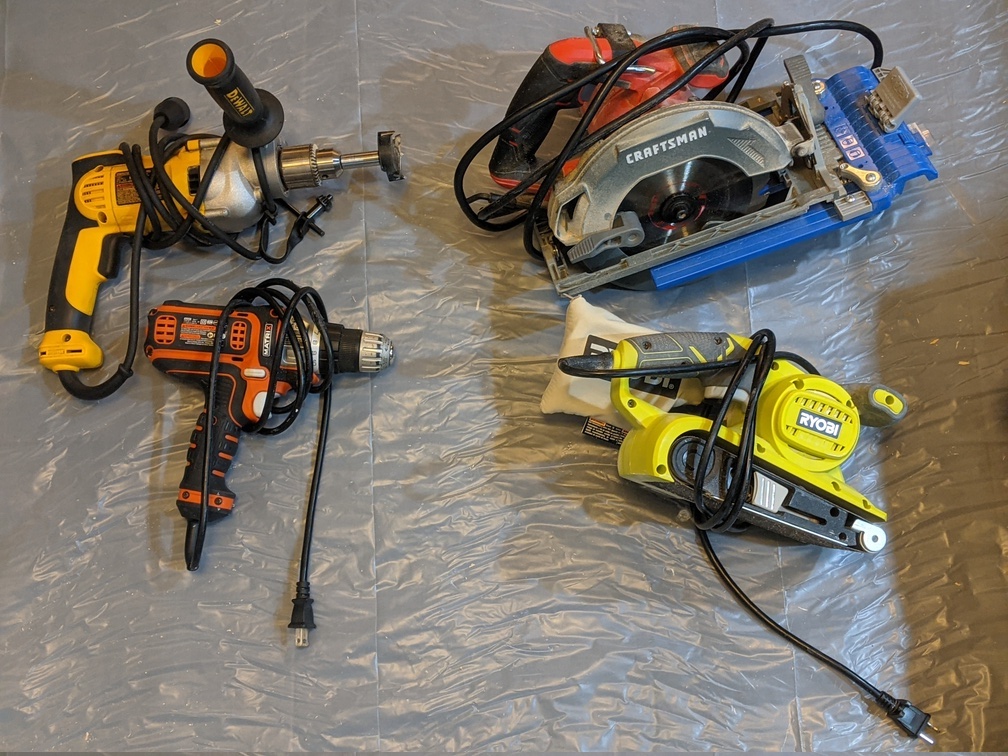
No table saw and no workbench other than two uneven sawhorses built from 2x4's and the tools pictured above. This is what some would call a "redneck engineering" project, though I do aspire for the outcome to look at least half-decent. However, perfect right angles and porcelain-like finished surfaces will likely not be found here.
I know they say "a bad craftsman blames his tools". I'd like to watch whoever "they" is build an F-35 with a ball-peen hammer and some rocks. That aside, I have no doubt that a highly practiced woodworker with the same tools and materials as myself could build something truly spectacular. However, I am not anywhere near that level. Nevertheless I need a cabinet and a place to put my new 3D printer and the only way I am getting such a piece of furniture at a reasonable price is to build it myself.
Anyways, here is the old cubby cabinet that I wish to also replace with the bottom half of this new cabinet:
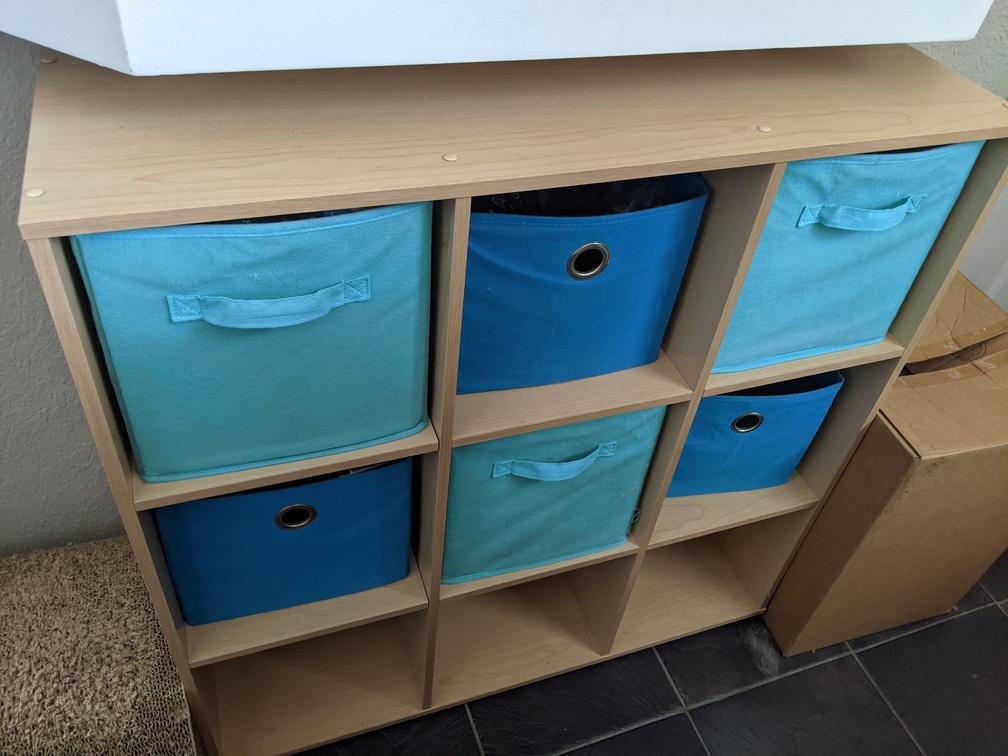
I immediately got to work in some CAD software after I had ordered the printer. It took several iterations to get something that maximized utility and constructability. I think there is something really valuable in going through the whole process of budgeting -> design -> purchasing parts -> construction. It took me longer than I care to admit to understand this, but learning to design things less as "Platonic forms" and more based upon the tools available for the actual construction process is its own skill. I have heard plenty of complaints about this from people working in machine shops trying to manufacture the designs sent down by engineers.
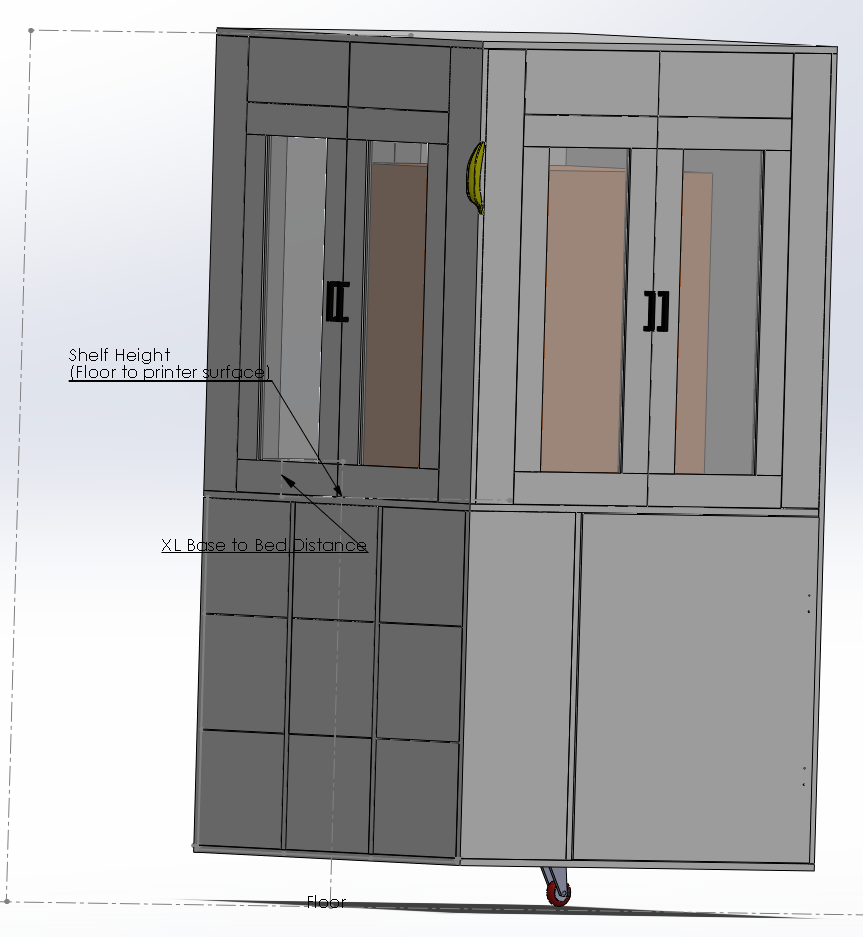
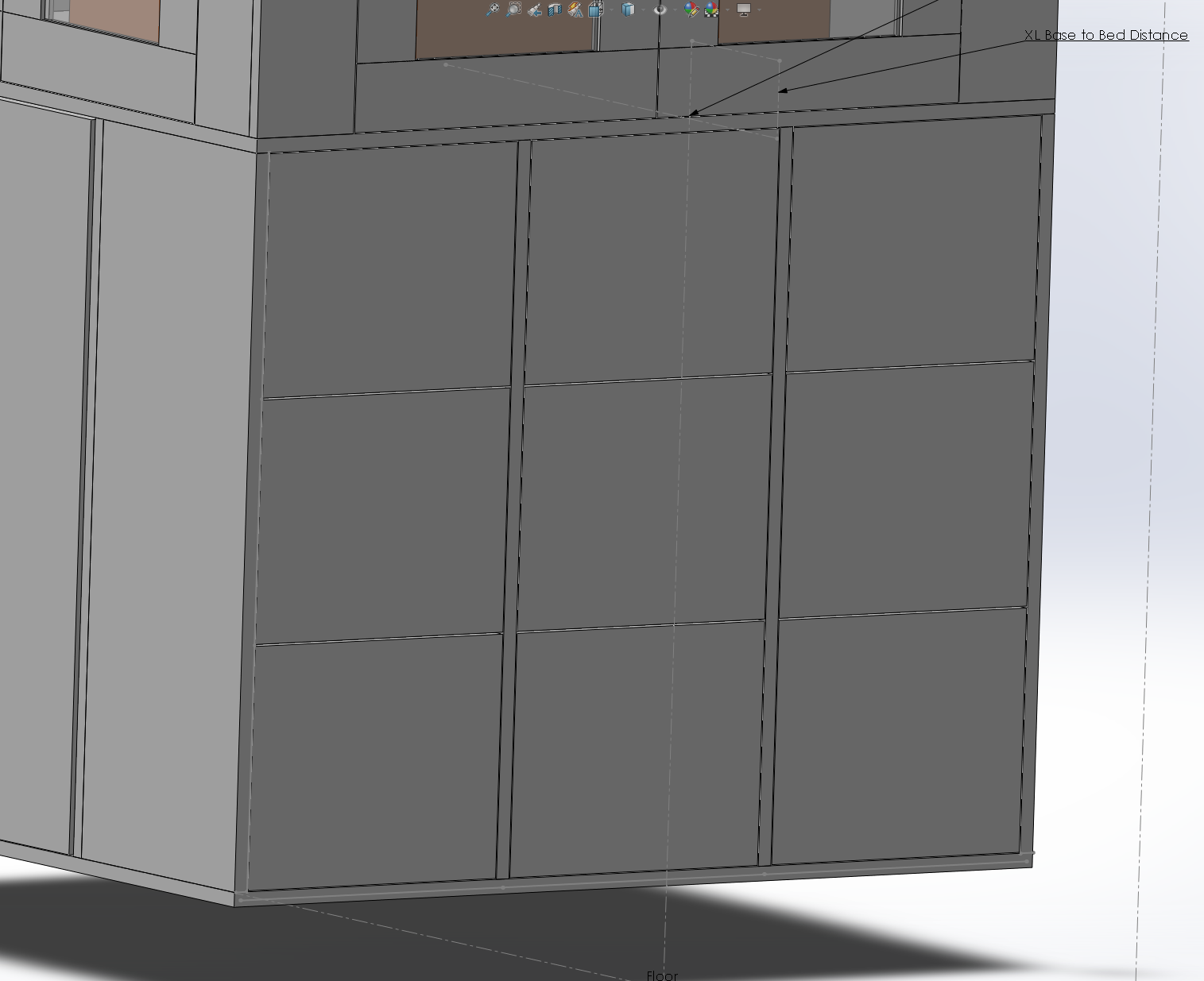
Today is the first day of construction. I still maintain a very limited set of construction tools as I don't have the space or budget for more than what is absolutely necessary. Having learned from past mistakes that I can't exactly rely on a steady hand to make very long straight cuts, I did opt to buy a Kreg Accu-Cut for making such cuts. It allows me to slice up 4x8 foot plywood with reasonable precision, but it is time consuming. The doors for this cabinet require dozens of 3 and 4 inch thick slices of 1/4 plywood and marking and cutting each one takes much longer than using a table saw. This cabinet requires all those pieces entirely because of my limited tools. I want to have doors with acrylic panes inside them, but every design I've seen online either requires a router, table saw, or both, and I have neither. So my design involves sort of "building the door around the pane" using strips of wood that are of the exact same thickness as the panes I am using. Basically: its a Plexiglass sandwich.
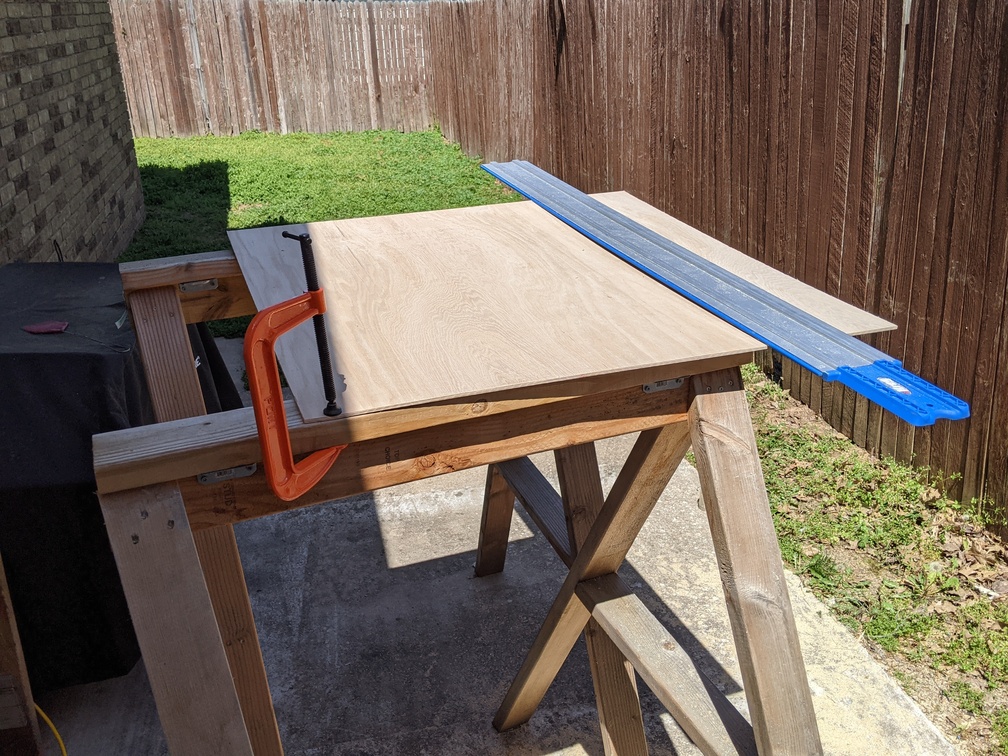
Lots more to do!
Comments
No comments yet. Be the first to comment!